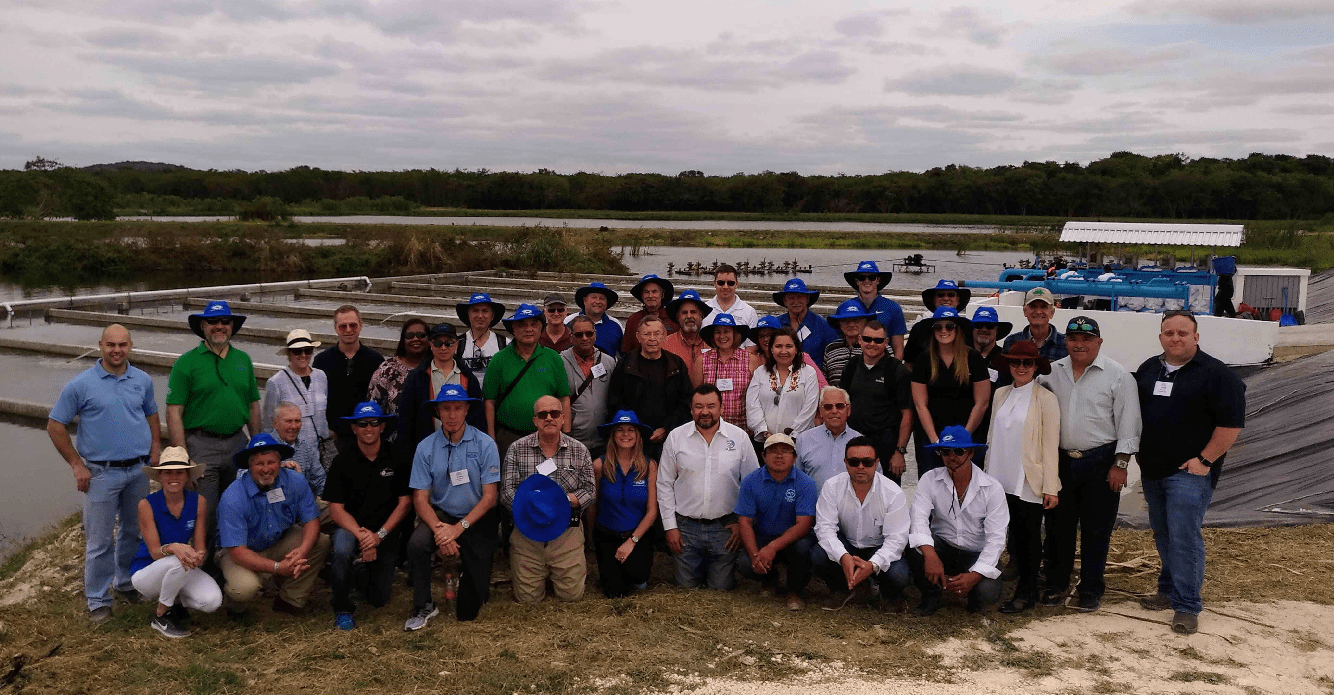USSEC Hosts Aquaculture Educational Opportunity in Campeche, Mexico
- Category:
- Aquaculture
- General News

“Eye-opening” is the word most used by grower leaders and other U.S. Soy family participants for the annual Aquaculture Educational Opportunity (AEO) event held in Campeche, Mexico, January 16-18, 2018.
The International Soy in Aquaculture team gathered from around the world to provide updates of aquaculture production in their regions, challenges to industry growth, and opportunities to increase the use of U.S. Soy in global aquaculture feeds.
Team members from China, Southeast Asia, the Americas, the Asian Subcontinent, Turkey, and Egypt also reported on current initiatives in their regions to promote sustainable aquaculture and the utilization of U.S. Soy-based feeds.
“In just two days, I’ve learned a lot about aquaculture, and it’s way more complicated than I thought it would be,” said Laverne Arndt, grower leader from Iowa and first-time attendee. “The people here are very knowledgeable and this is very valuable information… there’s so much to it.”
George Martin, grower leader from Kentucky and a board member of the Soy Aquaculture Alliance, has attended several of these educational events to keep up with global aquaculture trends.
“If I wasn’t interested in promoting aquaculture, I wouldn’t be here,” said Martin. “It allows me to see the updates, what progress has been made in the past 12 months, what are the challenges and to see what’s coming down the road.”
This was the second AEO attended by Jeff Phillips from the Minnesota Department of Agriculture, which aspires to be at the forefront of the aquaculture feed sector.
“This event gives me valuable information to talk to feed buyers about the important qualities of U.S. soybeans for aquaculture and trends in the global aquaculture industry,” said Phillips.
Commercial partners of the soy industry also benefited from the information presented. Paul Konrad of Landus Cooperative – a grain, animal, agriculture and agronomy inputs co-op based in Ames, Iowa – was struck by how many countries are trying to get soy protein concentrate (SPC) for marine aquaculture, and can’t source it with the current production capacity in the U.S.
“We need to use our resources to find a way to economically supply feed-grade SPC for the aquaculture industry,” said Konrad. “As someone new to the industry, that information is very eye-opening for me. The benefit of this event is in understanding the breadth of global aquaculture and the growth potential that exists.”
Grower leaders from Iowa, Nebraska, Michigan, and Kansas also heard from feed researchers about innovative soy industry-funded work, and the latest information on the successful In-Pond Raceway System (IPRS) technology. First introduced by USSEC to Chinese fish farmers, the IPRS is now being rapidly adopted throughout China and Southeast Asia.
A field trip on the event’s final day included tours of cutting-edge tilapia hatchery Central Acuícola, as well as the first IPRS system in the Americas at La Granja tilapia farm. USSEC’s aquaculture program was instrumental in bringing this technology to La Granja as a demonstration project. After witnessing significant labor savings, a faster growth rate and 50 percent more yield with the IPRS, La Granja has plans to add four more IPRS systems in the near future.
Colby Sutter, executive director of USSEC’s aquaculture program, said that this event is critical in informing soybean growers of how their checkoff dollars are funding initiatives to expand usage of U.S. Soy. These efforts have resulted in unflagging soy industry support for global aquaculture.
“Aquaculture is the fastest growing food segment worldwide, and I hope we can be a part of that,” said Mike Korth, Nebraska farmer and United Soybean Board (USB) director. “Growers have a mountain of product to get through, and hopefully we can create new demand by helping the aquaculture industry grow.”



